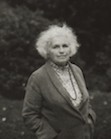Okay, so maybe you are a confirmed Kindle-hater. And you’re also a writer. You’ve sworn to yourself that you will never, ever, allow your words to be displayed on a Kindle. But as a writer, you don’t always have control over the format of your book. What to do?
At The Millions, Garth Risk Hallberg offers 7 ways to “Kindle-proof” your manuscript. For example:
Play With Text, Typeface, and White Space
eReaders currently use two approaches to rendering text. One is quasi-photographic, but the Kindle’s remains the more battery-efficient method of imposing a standard typeface. This makes the effects of a textually playful book like Danielewski’s House of Leaves or Karen Tei Yamashita‘s I Hotel or William H. Gass‘ The Tunnel – difficult to render on a Kindle. If you want to up the degree of difficulty, you can try combining this with step 1, following Gass’ lead in Willie Masters’ Lonesome Wife, wherein text in a range of typefaces and sizes curves and distends and floats around and behind the illustrations. And then there’s white space. Mallarmé may have got there first, but Blake Butler‘s There is No Year is moving the ball forward. It’s available for Kindle, but only the good Lord and Jeff Bezos know how it reads there. (I don’t think I need to point out the irony of the Amazon customer review for A Visit from the Goon Squad that finds “the ‘powerpoint’ chapter…extremely difficult to read on the Kindle.”)
Hallberg’s other tips? Use color and illustrations, play with the physical form of the book (such as putting your pages loose in a box!), and more. He also offers a list of books that are “pretty damn Kindle-proof”–visit his essay for the full scoop.
Of course, “Kindle-proofing” your book means it will never be in a Kindle ad to spark conversations like this.






